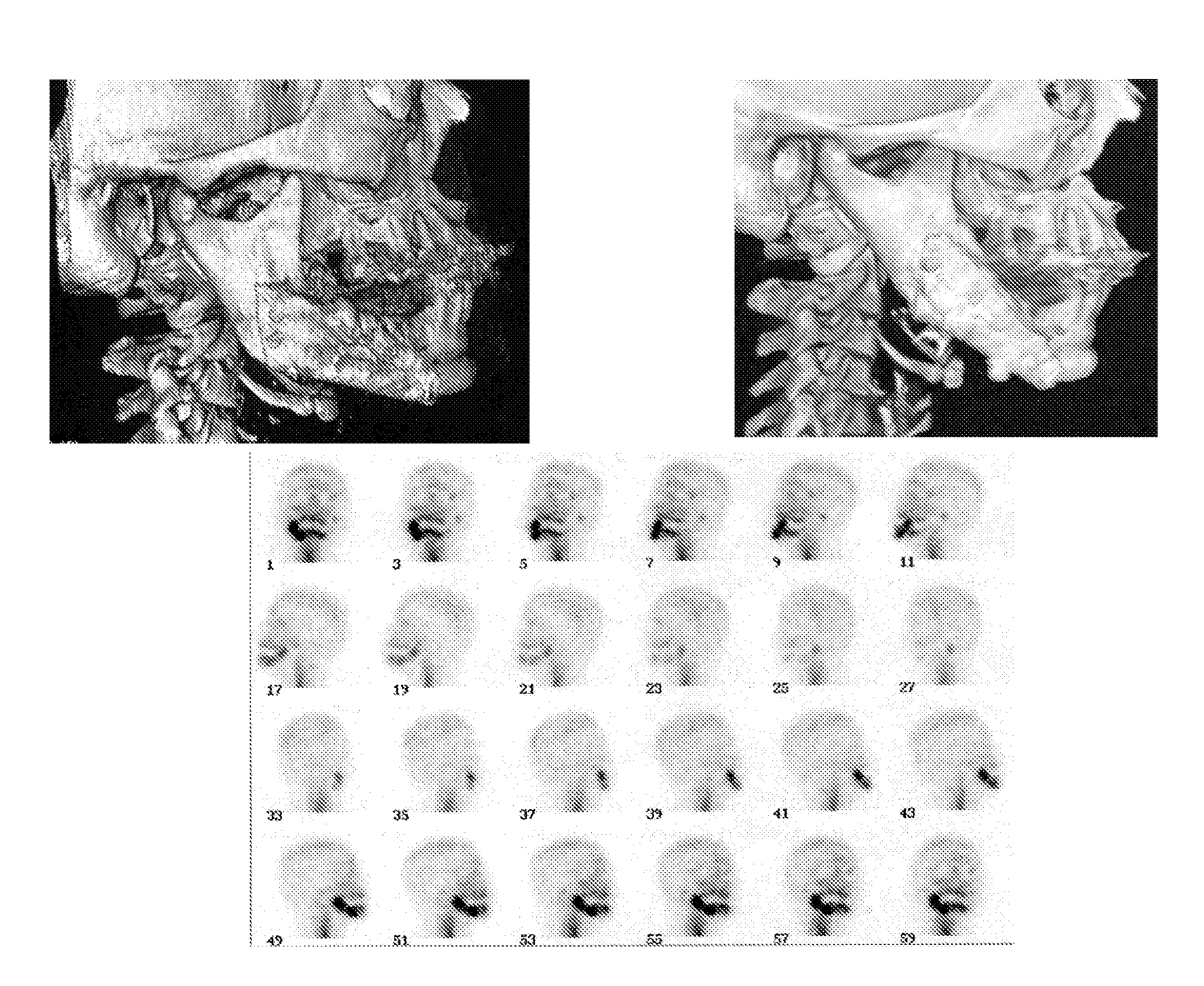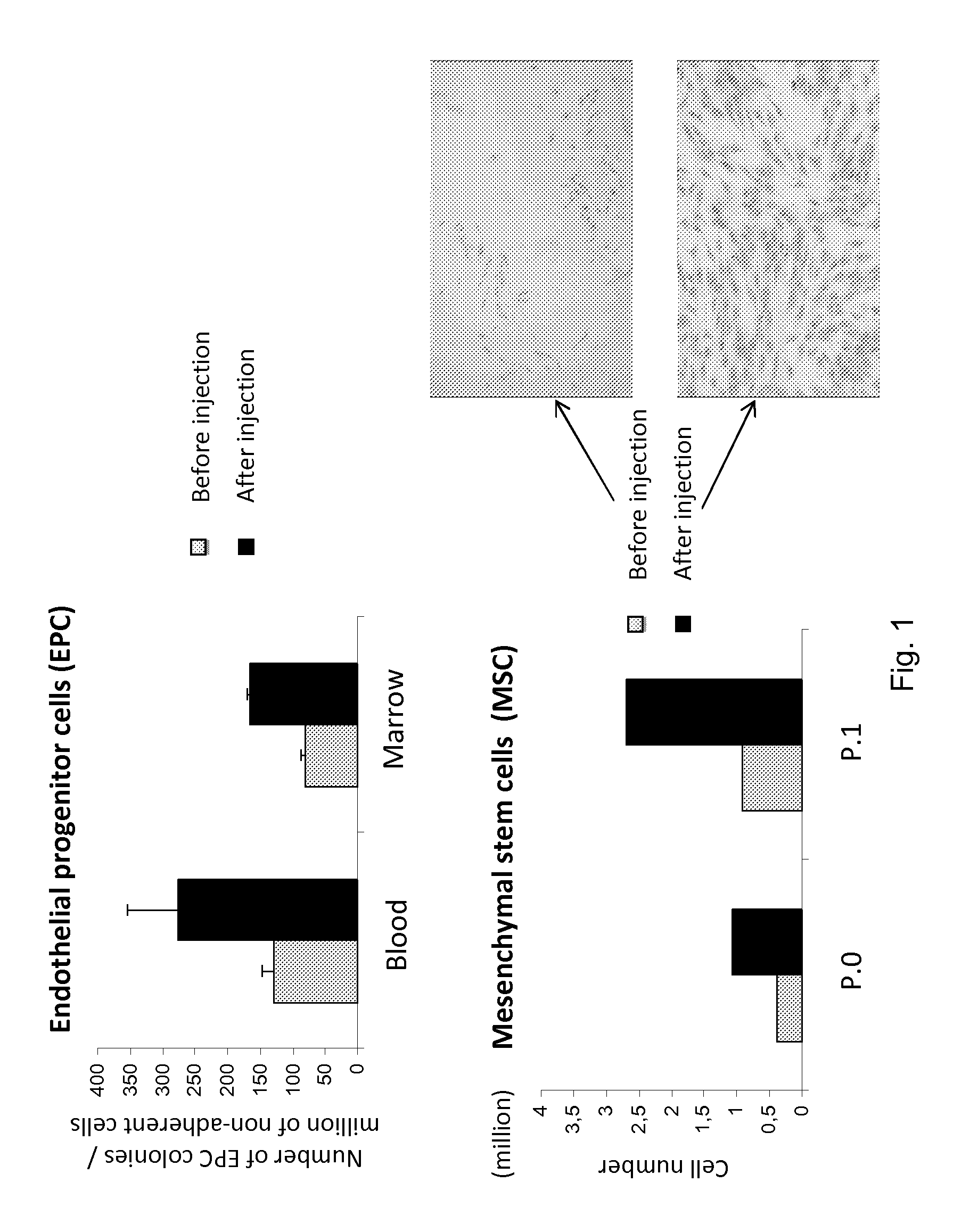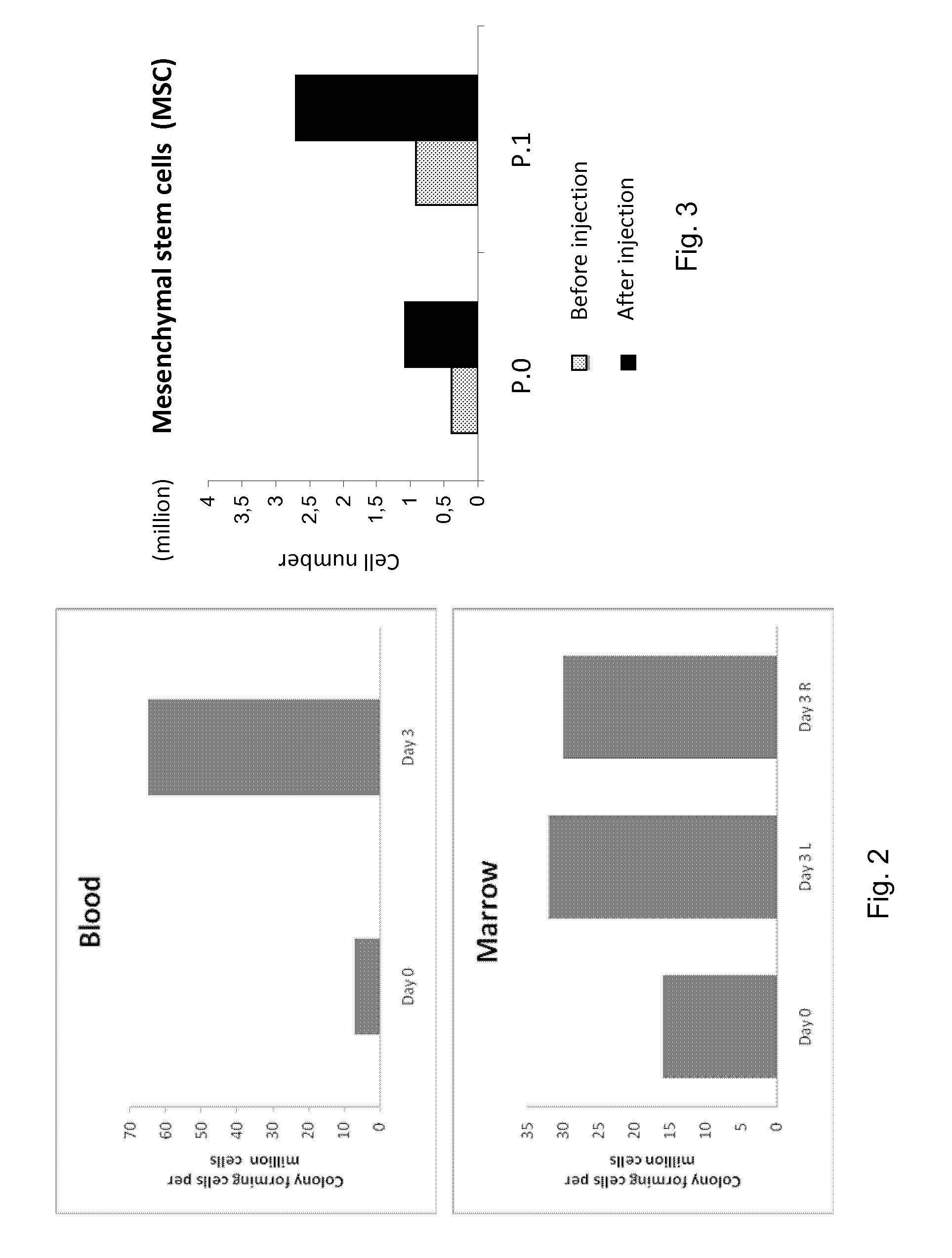Method and means for producing tissues and tissues obtained
a tissue and tissue technology, applied in the field of tissue production, can solve the problems of reducing the differentiation potential affecting the proliferation capacity of the bone marrow, and requiring a long time of culture, so as to reduce the proliferation of cells
- Summary
- Abstract
- Description
- Claims
- Application Information
AI Technical Summary
Benefits of technology
Problems solved by technology
Method used
Image
Examples
Embodiment Construction
[0163]In the present method, a human patient is used both as the donor and as the host for the graft.
[0164]The originality of the present method is that the proliferation cell step is performed in situ i.e. in vivo and no longer in vitro as done in the prior art techniques. However, stem cells stimulated according to the invention, have an increased growth in vitro (compared to non stimulated stem cells). It is known that the amount of stem cells produced by a human patient is extremely important in newborn humans, but decreases rapidly with years.
[0165]Therefore, it is extremely difficult to recover stem cells from patients, especially older patients.
[0166]Therefore, the method and means according to the invention can be used for obtaining rapidly in vivo large amount of stem cells and recover these obtained stem cells with limited risk to the patient.
[0167]This technical characteristic combined with the use of activated autologous PRP confers to the present method and means a real...
PUM
| Property | Measurement | Unit |
|---|---|---|
| Fraction | aaaaa | aaaaa |
| Fraction | aaaaa | aaaaa |
| Time | aaaaa | aaaaa |
Abstract
Description
Claims
Application Information
 Login to View More
Login to View More - R&D
- Intellectual Property
- Life Sciences
- Materials
- Tech Scout
- Unparalleled Data Quality
- Higher Quality Content
- 60% Fewer Hallucinations
Browse by: Latest US Patents, China's latest patents, Technical Efficacy Thesaurus, Application Domain, Technology Topic, Popular Technical Reports.
© 2025 PatSnap. All rights reserved.Legal|Privacy policy|Modern Slavery Act Transparency Statement|Sitemap|About US| Contact US: help@patsnap.com



